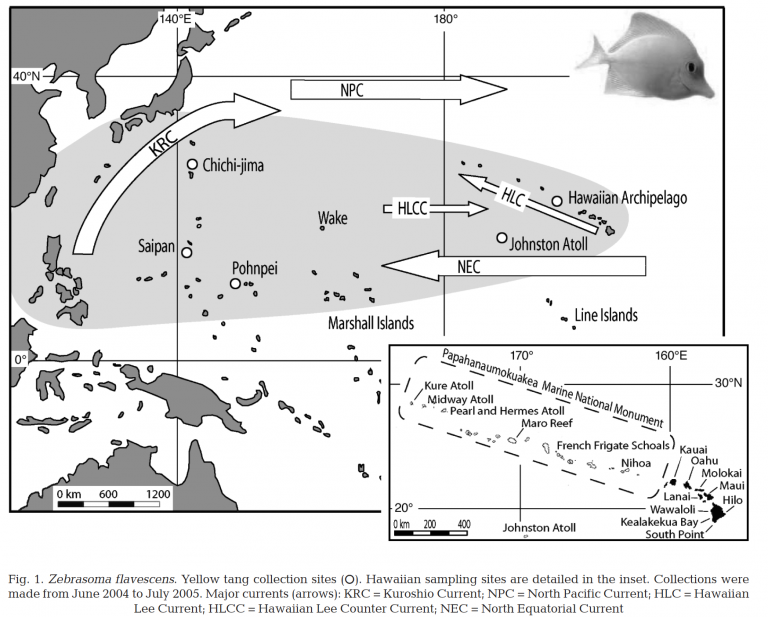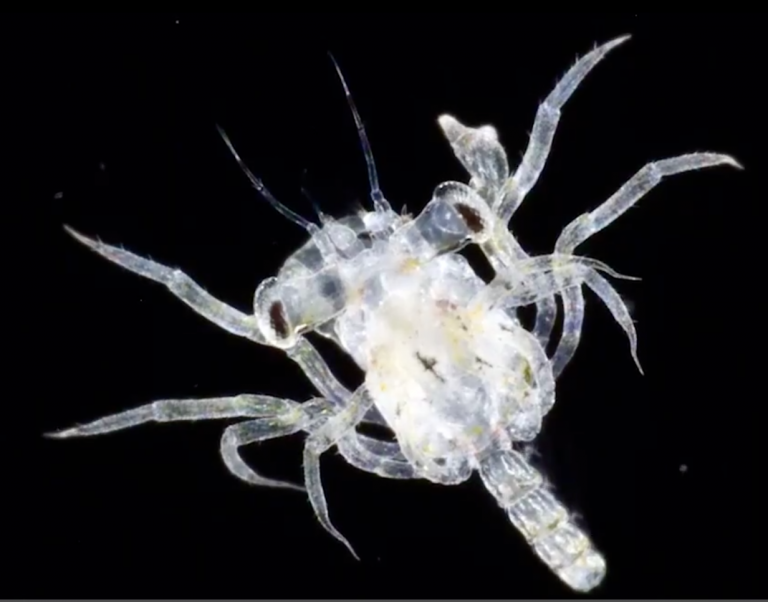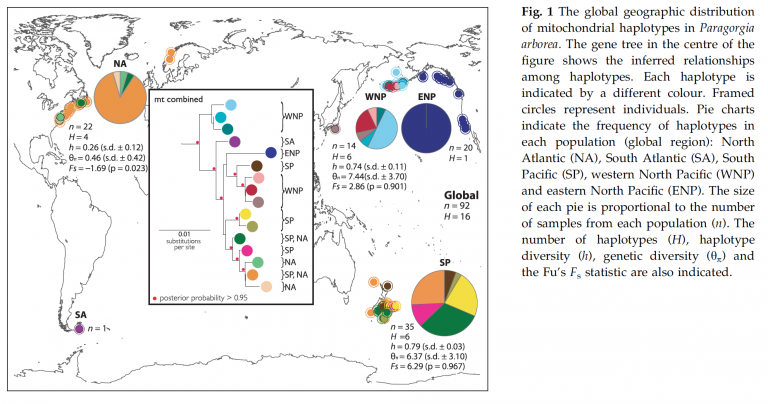If you have been following along with many of the live streaming ROV footage, including the last Falkor cruise, you may have noticed this fancy word “biogeography” thrown around. In a literal sense it means “What lives Where?”, but in the broader scientific usage there are more specific questions like: “Do these habitats have the same species in the same abundances?” “Are these areas connected?” “Is there a history of migration between these areas?”
These questions focus on the community of animals between areas of interest and the possible linkages between them. Numerous methods can be used to answer these questions. In the deep-sea there are three methods frequently used of particular note: Community analysis, larval dispersion modeling, and genetic connectivity. Each one is very useful in itself, but together they can describe the natural histories of both small and large-scale regions.

Community analysis compares species lists and abundances between regions, while also looking at possible relationships between species in an area. Think predator-prey or mutualistic relationships. These analyses are fairly common in deep-sea research now, especially with the increase in high-resolution video from deep-submergence vehicles. On Necker ridge we were able to find that the communities at 1500 m separated out between North and South pinnacles, with only 50 km between them. This answered the question “Do the same species in the same numbers live at every location?”

When we find different communities between habitats, it does not necessarily mean that those communities are isolated from each other. Environmental differences could instead impact the abundances of certain fauna, changing what is more dominant at each location. In order to understand the connectivity, we can model how larvae may disperse between locations and look at the genetic similarities between any species shared between the areas.
Larval dispersal can be a complicated puzzle in marine environments. Many marine invertebrates have external fertilization where egg and sperm mix in the water column, then successfully fertilized eggs become larvae and float as plankton. Currents can take these larvae quite far, depending on how long they remain plankton before settling and metamorphosing into adults.

If larvae disperse between locations, then that also means genetic material is shared between habitats, and we can look at the similarity of certain gene regions to compare how likely it is those species are interbreeding. If different enough, those genes could also show what we thought were the same, are actually different species. The samples taken between the Mid-Pacific Mountains, Necker Ridge, and the Northwest Hawaiian Islands will focus on getting similar species from each location – and the dominant fauna – in order to test their genetic connectivity.


